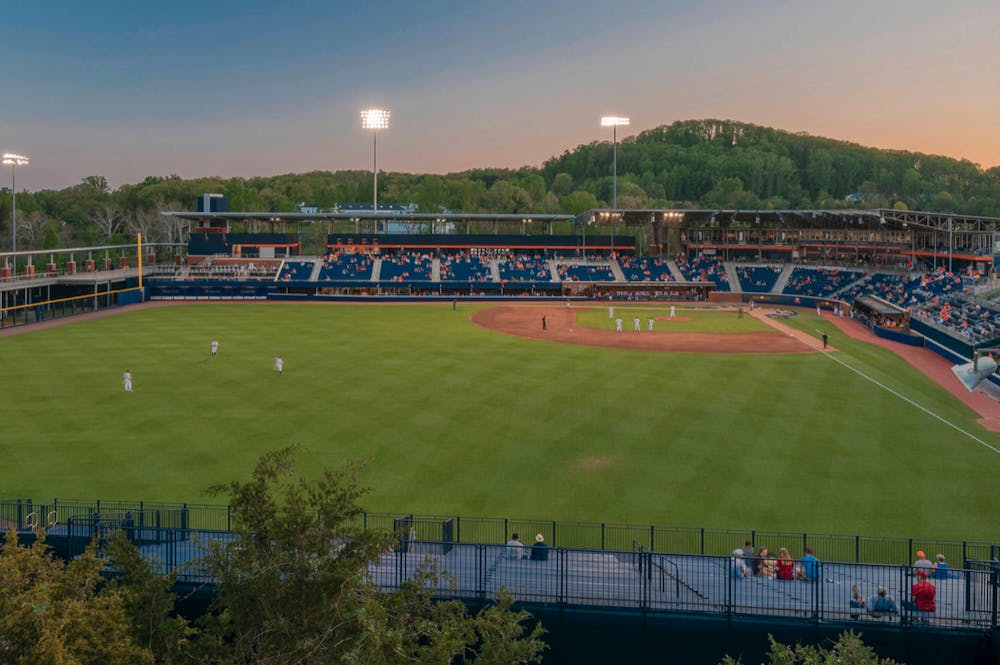After administering 1,297 COVID-19 tests between Feb. 22 and Feb. 28, the Virginia athletic department reported four positive results among student athletes and staff. These numbers reflect a 0.3 percent positivity rate and the lowest number of positive test results since the beginning of the spring semester. Athletic department COVID-19 testing began July 5, and 24,162 tests have been administered since, resulting in 203 positives, yielding a 0.8 percent positivity rate.
In adherence to the ACC protocols, “high risk” sports — field hockey, men’s and women’s soccer, men’s basketball and wrestling — are tested three times a week. “Low risk” sports — track and field, swimming, diving, golf and tennis — receive weekly testing. In addition to winter and spring sports playing right now, four fall sports will be returning for a spring season before their respective NCAA tournaments.
“All positive tests were reported to the Blue Ridge Health District (formerly known as the Thomas Jefferson Health District) of the Virginia Department of Health,” the press release stated.
The press release also said the individuals who tested positive for COVID-19 “will self-isolate for at least 10 days, or until symptoms are resolving plus 24-hours fever free,” whichever is longer. Furthermore, the “known close contacts of those who test positive, as determined by the Virginia Department of Health, will also be asked to self-quarantine.”
The decrease in COVID-19 cases within the athletic program is a trend seen in the entire University community. After a record-high 229 University cases recorded Feb. 16, the University implemented new, stricter regulations which lasted 10 days. For the most part, these restrictions were lifted this past Friday to reflect the overall decrease in positive cases.
March 1 nears the one-year mark of NCAA cancellations and also the upcoming start of the March Madness tournaments. The University’s men’s basketball program is expected to be selected, while the women’s program had to cancel their season in January because of COVID-19 and injury-related issues.
According to the NCAA, team selection for the men’s tournament will occur March 14, and the tournament will start play March 18. With COVID-19 ever so present, this year's tournament will look a lot different from those in the past.
Firstly, the entire tournament will follow the bubble-like setting that has proved to be effective in many professional sports as they returned to action. All of the games will be played in Indiana, with the majority of the games being played in Indianapolis.
All of the teams will practice and reside at the Indiana Convention Center, with residence and dining all planned to be socially distanced. Crowds at the game will be limited to 25 percent capacity — which does include the event staffers and family members of players and coaches.
Prior to the start of the tournament, each player, trainer and coach will need seven consecutive negative COVID-19 tests to be cleared for the tournament. Then, during the tournament, everyone inside of the bubble will be tested daily.
If there is to be a positive test during the tournament, contact tracing will be done with aid from tracking devices worn by players and coaches. If an entire team shuts down and does not have enough players, the team will forfeit the game, and the opposing team will advance to the next round.
If a team is unable to start the tournament due to COVID-19 concerns, the team will be replaced by either the next best team in their conference, or by the next best team up large. However, once the tournament begins, there will be no replacements within the bracket.
There are many “what-ifs” in the upcoming March Madness tournament, and it will be interesting to see how it all unfolds in the coming weeks. Hopefully, in 2021, COVID-19 and March Madness are able to coexist, and the Cavaliers can reclaim their defending National Championship.
For more updates on the University’s COVID-19 status, check out the tracker that updates Monday through Friday by 4 p.m. with all of the University’s positive tests. There are currently 329 active cases in the University community. The quarantine rooms — used for those who have been exposed to someone who tested positive for COVID-19 — are currently 16 percent full, while the isolation rooms — for those who have tested positive for COVID-19 — are at 6 percent capacity. All of the student-athlete positive tests are included in this data.







